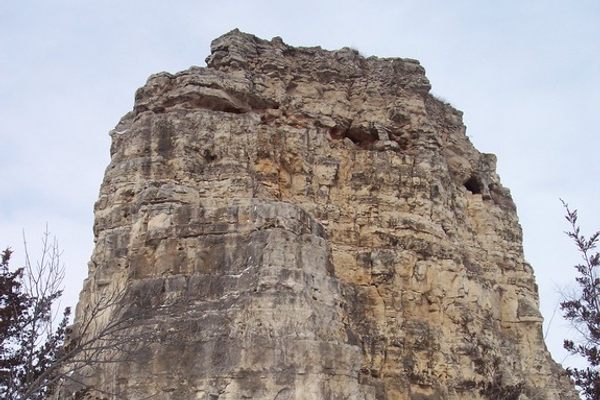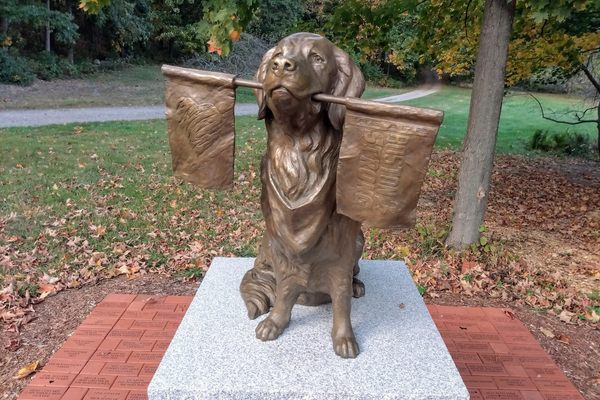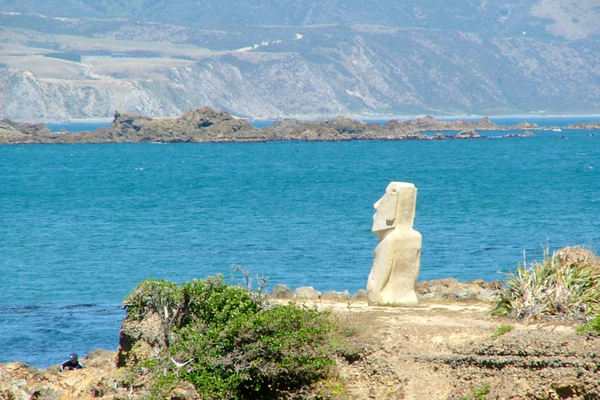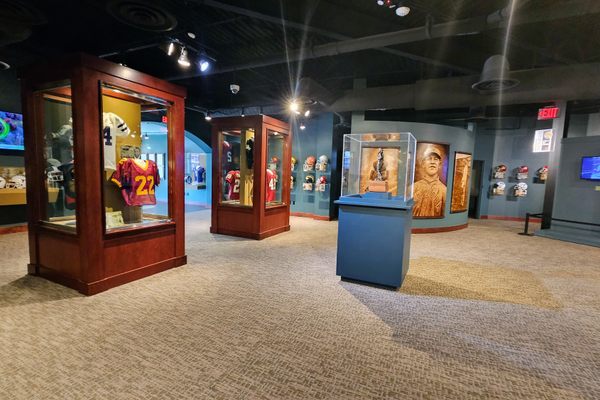AO Edited
'The Lacrosse Players'
This downtown statue pays tribute to the Native American game that gave the city of La Crosse its name.
In the middle of Main Street, a sculpture depicts two athletes reaching for the sky, holding long sticks with netting at the end, competing over a ball. A third athlete lays in the scrum, trampled underneath. The game? Lacrosse. The city? La Crosse, Wisconsin. The Lacrosse Players is a tribute to the Ho-Chunk Nation of Wisconsin and the game that led to the town’s name.
The origins of lacrosse lay to the east of Wisconsin, as the sport originated in or near Canada with the nations of the Haudenosaunee Confederacy in the 17th century or perhaps even earlier. The sport was given the Western name of “lacrosse” in 1636 by famed missionary Jean de Brébeuf, who observed a game while living among the Huron-Wendat Nation. The game spread quickly across many tribes up and down the East Coast and into the Great Lakes region, where it took root. By 1667, the Ho-Chunk Nation would compete in an inter-tribal game, drawing thousands of players to what is now present-day Green Bay.
Native nations would compete vigorously, sometimes settling real-world conflict through the field of play, and the area that became La Crosse, with its flat and fertile fields, was a great place for the game to thrive. In 1805, American explorer Zebulon Pike would come across “a great game of the cross” at this site, in a match that pitted the Dakota people against the Ho-Chunk and Fox nations. Although the Dakota won the game, it was Ho-Chunk land that would be named after the sport. By 1844, Nathan Myrick, the town postmaster and founder, changed the name of Prairie de LaCrosse to the modern La Crosse, which stuck.
Unfortunately by that time, the Ho-Chunk Nation had already been forcibly resettled. Already reeling from a series of military losses and disease, the population had declined to as low as 600 people before recovering somewhat in the early 19th century. However, by 1832, the nation ceded the land that would become La Crosse as a result of the Black Hawk War, later ceding all their holdings in Wisconsin. The treaties were spurious or signed under duress, and the Ho-Chunk Nation would continue to return to Wisconsin through non-violent means, being repeatedly rounded up until the 1880s, when they were granted their return. Today, the Ho-Chunk Nation is once again flourishing in Wisconsin, owning land in 14 different Wisconsin counties.
A century later, the city of La Crosse had some extra money available for the arts, and then-Mayor Pat Zielke commissioned artist Elmer Petersen to create a new public work. Petersen had moved to the La Crosse area from North Dakota, where he had created his most famous piece, the World’s Largest Buffalo monument.
Petersen was taken by La Crosse’s history and decided to create a work depicting the central story of the town’s founding. He was sensitive to his status as a white man depicting Indigenous history. In his words, “I wanted to be accurate enough to be acceptable so that it just isn’t disgusting to anybody, and would demean anybody, and just somehow be a bad thing. And so I did enough research that it would come out okay.”
The resulting piece, the Lacrosse Players, was completed in 1981. It depicts the strength of the players through striking muscular welded panels made from Cor-Ten steel, and includes details specific to the historic game. In an interview just before his death, Petersen said that he was proud of his contribution to the city and his commitment to getting the sculpture right. “It’s probably as good of a piece I’ve ever made,” Petersen said.
Know Before You Go
The Lacrosse Players is on display in a public plaza located at 2nd Street and Main Street. A larger replica of the statue is viewable as you enter town on I-90 south on Rose Street, with a pedestal that reads "La Crosse Welcomes You." Visitors are discouraged from crossing the four-lane highway to view the replica sculpture, and are welcomed to visit the downtown original instead.














Follow us on Twitter to get the latest on the world's hidden wonders.
Like us on Facebook to get the latest on the world's hidden wonders.
Follow us on Twitter Like us on Facebook